Tummy Tuck in Croatia
Search and Compare the Best Clinics and Doctors at the Lowest Prices for Tummy Tuck in Croatia

Find the best clinics for Tummy Tuck in Croatia
With Medijump you can browse 3 facilities offering Tummy Tuck procedures in Croatia. The cheapest price available is $2,743 in Zagreb. And for the cheapest price globally, prices start from $76 in Czech Republic.
Tummy Tuck in Zagreb
Price: $ 2,743
Czech Republic offers the best prices Worldwide
Price: $ 76
Arcadia Clinic For Plastic and Aesthetic Surgery, can be found in Ul grada Vukovara A, Zagreb, Croatia and offers its patients Tummy Tuck procedures as well as 32 other procedures, across 3 different procedure categories. The price of a Tummy Tuck procedure varies from $2,743 to $3,899, and the average price is around $2,743. Many medical professionals work at the Clinic, with 10 in total, and Arcadia Clinic For Plastic and Aesthetic Surgery is accredited by just one known accreditations institute, CSPRAS - Croatian Society of Plastic, Reconstructive and Aesthetic Surgery
Cosmetic Plastic Surgery - Facial Plastic Surgeon, can be found in Trg Sv Stjepana, Hvar, Croatia and offers its patients Tummy Tuck procedures as well as 39 other procedures, across 3 different procedure categories. At present, there is no pricing information for Tummy Tuck procedures at Cosmetic Plastic Surgery - Facial Plastic Surgeon. The pricing information is quite specialised, so it's only available on request, and the average price is around $2,743. Currently, there's no information available about the doctors at the Hospital, and Cosmetic Plastic Surgery - Facial Plastic Surgeon is accredited by just one known accreditations institute, CSPRAS - Croatian Society of Plastic, Reconstructive and Aesthetic Surgery
Cosmetic Surgery Dr. Žgaljardić, can be found in Ul grada Vukovara A, Zagreb, Croatia and offers its patients Tummy Tuck procedures as well as 51 other procedures, across 7 different procedure categories. At present, there is no pricing information for Tummy Tuck procedures at Cosmetic Surgery Dr. Žgaljardić. The pricing information is quite specialised, so it's only available on request, and the average price is around $2,743. The lead specialist at the Hospital will be carrying out all the treatments, and Cosmetic Surgery Dr. Žgaljardić is not accredited by any recognised accreditations institutions.
- Home
- Croatia
Compare Before & After Photos of _procedure_photos.phpTummy Tuck


Front view
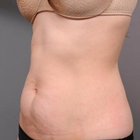

Half-side view
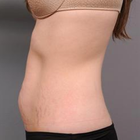
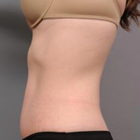
Full-side view
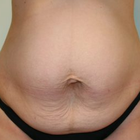
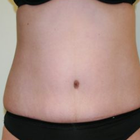
Front view
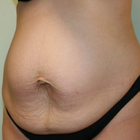

Half-side view

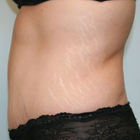
Full-side view


Full-side view
WHY US?
At Medijump, we're making medical easy. You can search, compare, discuss, and book your medical all in one place. We open the door to the best medical providers worldwide, saving you time and energy along the way, and it's all for FREE, no hidden fees, and no price markups guaranteed. So what are you waiting for?

Free

Best Price

Widest Selection

Risk-Free
What you need to know about Tummy Tuck in Croatia

Also known as abdominoplasty, a tummy tuck is a surgical procedure to create a toned, firm, and flat abdomen by removing excess skin and fat. It has both cosmetic and medical benefits as it can tighten the abdominal muscles, restore the contour of the belly, improve posture, correct hernia, and reduce stress urinary incontinence.
A tummy tuck is suitable for people who want to remove excess skin due to a significant weight loss, aging, or pregnancy. However, not everyone can undergo the procedure. Your surgeon may not allow you to undergo the procedure if you plan to lose a significant amount of weight, you might want to get pregnant in the future, have a body mass index (BMI) that is greater than 30, smokes, have a severe chronic condition, and had an abdominal surgery that caused scar tissue in the past.
What is the cost of Tummy Tuck in Croatia?
The price of a Tummy Tuck within Croatia primarily hinges on several elements such as the operating doctor's expertise and credentials, hospital selection, and the intricacies of the operation. It could also fluctuate based on your distinct objectives and the degree of surgical intervention required. Ensure you clarify with your clinic if the cited price includes all facets of patient care, from the initial consultation to follow-up appointments.
Engaging in open conversations with your healthcare provider about the all-inclusive costs is essential. Typically, health insurance won't cover aesthetic surgeries like Tummy Tuck. However, they may partially or completely shoulder the cost if the procedure aims to address health issues such as hernias or skin conditions caused by surplus skin. Hence, a comprehensive discussion with your insurance provider about this matter is absolutely crucial.
What does a Tummy Tuck Procedure Involve?
A tummy tuck procedure will get rid of some of your excess skin and fat and will tighten the muscles in your abdominal wall.
What you need to understand is that a tummy tuck procedure is not an alternative for weight loss or an appropriate exercise program. While its results are significantly permanent, maintaining a positive outcome will require you to have a healthier lifestyle.
Furthermore, this type of treatment procedure is not the same as liposuction. A tummy tuck is a major surgery and not all individuals who wish to undergo it are good candidates. Generally speaking, this specific type of treatment procedure is for both men and women who are in good health. This is also suitable for women who have had more than one pregnancy, as well as both men and women who were formerly obese and still have excess fat and loose skin around their belly area.
You will be advised to postpone your plans for a tummy tuck procedure if you are:
- Planning to get pregnant - you may want to consider it once you’re done having children. A tummy tuck tightens your vertical muscles and future pregnancies may separate those muscles.
- Planning to lose weight - tummy tuck should be done after weight loss.
In preparation for a tummy tuck procedure, you will need to have a consultation with your surgeon. During your consultation, you will be asked about your expected result, goals. Furthermore, your surgeon will also discuss the following options:
- Partial abdominoplasty (Mini abdominoplasty) - this is for those people who have fat deposits below their navel area. This type of tummy tuck procedure usually lasts about two hours, depending on the case.
- Complete abdominoplasty - With this type of tummy tuck surgery, an incision is usually from hip bone to hip bone following the contouring of skin, tissue, and muscle as needed. It will also be required to move the patient’s belly button; patients must also have tube drainage under their skin for a few days.
Before your actual surgery, you may be asked to do the following:
- Quit smoking two weeks before and two weeks after your surgery.
- Eat well balanced complete meals.
- Stop taking certain medications before and after your surgery (prescription drugs, herbal medicines, and supplements)
A tummy tuck procedure typically lasts for about one to five hours, depending on your case. You will also be given general anesthesia while you undergo the surgery, meaning, you will be asleep during the whole procedure.
How Long Should You Stay in Croatia?
Depending on the extent of your tummy tuck, you may need to stay in the hospital overnight or leave the hospital on the same day. However, since you have to attend follow-up checkups and allow your body to heal, you have to stay in Croatia for at least 7 days following your discharge from the hospital. Your surgeon will check your overall health and remove the stitches during the follow-up checkups.
What's the Recovery Time for Tummy Tuck Procedures in Croatia?
The recovery period after a tummy tuck depends on various factors, such as your general health, body weight, and age. In general, you may be able to go back to work (if your job does not require a lot of physical activities) and perform light exercises (such as walking) within 2 to 3 weeks after the surgery. You may need to wait for about 6 to 8 weeks until you can go back to your full normal routine, including performing vigorous activities. Still, your body will continue to heal for a few more months, so it’s better to take it easy until your surgeon allows you to return to your full activity.
What sort of Aftercare is Required for Tummy Tuck Procedures in Croatia?
Your surgeon will give you detailed aftercare instructions. To avoid any complications, it is important that you follow them closely. The instructions may include restrictions (such as staying away from alcohol and nicotine), light exercises, and a healthy diet. Your surgeon will also tell you how to find an optimal resting position to make you comfortable during recovery. It is important to keep moving and doing some light exercise after the surgery to keep your blood flowing and reduce the risk of a blood clot.
To maintain the results of your tummy tuck, you need to maintain a well-balanced diet and exercise regularly, at least about 30 to 60 minutes every day. You should also limit your alcohol intake. Staying fit and in shape is the main key to keeping the results for a long time.
What's the Success Rate of Tummy Tuck Procedures in Croatia?
Most patients who have had a tummy tuck reported that they achieve positive results.The Tummy Tuck has exhibited a noteworthy record of success, with a plethora of patients revealing remarkable enhancements in self-concept and perception of physical appearance following the procedure. Nonetheless, it's crucial to harbor genuine prospects and apprehend that the outcomes of the procedure may not always be as anticipated, as they hinge on personal factors such as body framework, genetic inclinations, and lifestyle habits such as exercise and alimentation.
The proficiency of the surgeon and the facilities of the clinic where the procedure transpires greatly influences the success rate. Another pivotal success determinant should be the satisfaction of the patients with the outcomes. Hence, patients are motivated to actively participate in the decision-making procedure, sharing their aspirations and receiving feedback on attainable results.
Only about 3.1% of people developed complications following the surgery.
Are there Alternatives to Tummy Tuck Procedures in Croatia?
While there are non-surgical options that can be considered as an alternative to this type of treatment procedure, it's important to remember that these alternatives will not give you the same results as a tummy tuck. These non-surgical alternatives only give off limited amounts of skin tightening and a small amount of non-surgical fat reduction.
CoolSculpting - in this procedure, your fat cells will be frozen and eventually be eliminated by your body. You will usually see results after a few weeks and its final effects will be shown typically within three months.
SculpSure - unlike CoolSculpting, SculpSure makes use of laser beam light to kill your fat cells. During the procedure, the laser will be used to heat the fat cells to a point of irreversible damage. Once your fat cells are damaged, they will eventually be swept away by your body’s lymphatic system. This procedure is particularly great for the upper and lower abdominal area, as well as flanks. Little to no recovery time is needed, and full results can be seen within 12 weeks after the first treatment.
What are Potential Risks of Tummy Tuck?
Although the success rate is high, you need to be aware that the procedure does have some risks of complications. These include:
- Seroma (fluid accumulation beneath the skin)
- Unexpected scarring
- Poor wound healing
- Unexpected scarring
- Tissue damage or death
- Bleeding
- Infection
- An allergic reaction to anesthesia
- Changes in skin sensation
This is why following your surgeon’s aftercare instruction is very important, as it helps reduce the risk of complications.
Whilst the information presented here has been accurately sourced and verified by a medical professional for its accuracy, it is still advised to consult with your doctor before pursuing a medical treatment at one of the listed medical providers
No Time?
Tell us what you're looking for and we'll reachout to the top clinics all at once
Enquire Now

Popular Procedures in Croatia
Prices Start From $111

Prices Start From $120

Prices Start From $931

Prices Start From $236

Recommended Medical Centers in Croatia for Tummy Tuck

- Interpreter services
- Translation service
- Religious facilities
- Medical records transfer
- Medical travel insurance
- Health insurance coordination
- TV in the room
- Safe in the room
- Phone in the room
- Private rooms for patients available

- Interpreter services
- Translation service
- Religious facilities
- Medical records transfer
- Medical travel insurance
- Health insurance coordination
- TV in the room
- Safe in the room
- Phone in the room
- Private rooms for patients available

- Interpreter services
- Translation service
- Religious facilities
- Medical records transfer
- Medical travel insurance
- Health insurance coordination
- TV in the room
- Safe in the room
- Phone in the room
- Private rooms for patients available

- Interpreter services
- Translation service
- Religious facilities
- Medical records transfer
- Medical travel insurance
- Health insurance coordination
- TV in the room
- Safe in the room
- Phone in the room
- Private rooms for patients available

- Interpreter services
- Translation service
- Religious facilities
- Medical records transfer
- Medical travel insurance
- Health insurance coordination
- TV in the room
- Safe in the room
- Phone in the room
- Private rooms for patients available

- Interpreter services
- Translation service
- Religious facilities
- Medical records transfer
- Medical travel insurance
- Health insurance coordination
- TV in the room
- Safe in the room
- Phone in the room
- Private rooms for patients available

- Interpreter services
- Translation service
- Religious facilities
- Medical records transfer
- Medical travel insurance
- Health insurance coordination
- TV in the room
- Safe in the room
- Phone in the room
- Private rooms for patients available

- Interpreter services
- Translation service
- Religious facilities
- Medical records transfer
- Medical travel insurance
- Health insurance coordination
- TV in the room
- Safe in the room
- Phone in the room
- Private rooms for patients available

- Interpreter services
- Translation service
- Religious facilities
- Medical records transfer
- Medical travel insurance
- Health insurance coordination
- TV in the room
- Safe in the room
- Phone in the room
- Private rooms for patients available

- Interpreter services
- Translation service
- Religious facilities
- Medical records transfer
- Medical travel insurance
- Health insurance coordination
- TV in the room
- Safe in the room
- Phone in the room
- Private rooms for patients available
Tummy Tuck in and around Croatia
About Croatia
Despite its relatively small size, Croatia presents a striking geographical diversity. It undoubtedly has a unique charm for those indulging in fantasies of an idyllic beach holiday. Being home to a vast stretch of seafront that spans thousands of miles and an intriguing archipelago with hundreds of islands, Croatia upholds a significant appeal for lovers of sun, sand, and surf.
Beyond its appealing coastlines, Croatia encompasses much more in its terrains. The expanse of the country is dotted with rugged, dramatic mountains that serve as the perfect backdrop to ancient towns that are enclosed within historical walls. The country is rich in untouched national parks that are truly a paradise for nature enthusiasts.
You also get a glimpse of regal history through majestic castles that mark the Croatian landscape. The icing on the cake is its fantastic cuisine that adds a flavorful dimension to one's experiences. Last but not least, the impressive Roman ruins scattered across the country are a testament to its astonishing historical heritage, enticing history buffs worldwide to explore Croatia.
Although Croatia is a newcomer to the medical tourism sector, the demand for medical services in the country by foreign patients is increasing. Its strong growth is largely driven by the high cost of private care and long waiting times in public healthcare in countries such as the UK and the US. Croatia is known to have affordable, top-quality treatments performed by highly qualified medical professionals. Also, medical centers in the country have modern equipment, friendly staff, and exceptional services.
Popular Parts of Croatia
Zagreb, the bustling capital of Croatia, is a vibrant city that boasts a blend of verdant parks, unconventional art galleries, and enticing museums. Even though the city pulsates with modern energy, its scenery stands distinguished by an array of neo-baroque and art deco buildings that impart a unique architectural charm.
The vibrant city of Zagreb brims with an eclectic mix of attractions that can appeal to a wide range of tastes and interests. One such unique point of interest is the Museum of Broken Relationships. This peculiar museum offers an offbeat exploration into the vestiges of love that has ended, providing a distinctively intimate glimpse into personal stories of heartbreak.
Another notable site that significantly attracts visitors is the serene Mirogoj. Not just an ordinary cemetery, Mirogoj stands out as one of the finest architectural gems in Croatia, offering a peaceful retreat within the lively cityscape. Balancing modern dynamics with a deep-rooted cultural heritage, Zagreb indeed offers engaging facets for every type of traveler.
The Croatian Museum of Naïve Art, standing as a symbol of the country’s rich artistic history, is a must-visit for art aficionados. Further, the bustling Dolac Market is the city's epicentre for fresh produce where locals and tourists alike converge. Rounding off the list is the Funicular Railway, another essential experience that offers a charming way to take in Zagreb's panoramic views.
Those who want to enjoy Croatian’s famous beaches and explore ancient monuments should visit Dubrovnik. Known as the “Pearl of the Adriatic,” this city has a giant walled Old Town, stunning mountains, and idyllic beaches.
Weather and Climate in Croatia
Croatia's summer season, extending from July to August, is characterized by lovely warm weather and dry conditions, with a generous sprinkling of sunshine across most days. Transition seasons such as spring (April to June) and autumn (September to October) also offer a fairly warm and agreeable climate, making them pleasant times to visit. However, the spring season can sometimes bring increased rainfall.
On the other hand, winters in Croatia, particularly in January, can dip into colder temperatures. This chill factor is more pronounced in areas of higher elevations, where it's common to witness snowy landscapes. Each season in Croatia brings with it a distinctive climate and charm, shaping the country's scenic beauty in different ways throughout the year.
As the calendar flips over to the cooler months, the Croatian landscape transitions from sun-kissed beaches to frost-laden terrains, especially in the elevated regions of the country. Here, it is not unusual to see snowfall, adding a whole new dimension to Croatia's captivating beauty. Still, regardless of the weather, Croatia retains its charm, offering visitors an array of unique experiences all year round. The country's seasonal moods only add to its diverse appeal, ensuring that there's always something beautiful to see or experience, making Croatia a truly year-round destination.
Getting around in Croatia
Zagreb Airport claims the title of being the largest and most frequented international airport in Croatia. This bustling transport hub is where the majority of global explorers set foot in the country.
The airport operates a host of both regular and seasonal air services that connect Zagreb to numerous metropolises worldwide. Notable among these are Paris, Toronto, London, Barcelona, Dubai, and Seoul, further emphasising Zagreb Airport's significance in global travel.
There are good transport options in Croatia. Domestic flights are the fastest option to get around, though they can be a bit expensive. The bus network is run by a lot of different companies and is generally comfortable.
The Croatian Railways has a reasonably efficient service and is cheaper than buses, but they are slower and less frequent. There is a large network of catamarans and car ferries. In major cities, the main form of transport is buses. Taxis are available and are expensive.
Tourist Visas in Croatia
EU nationals, Canadian, Australian, British, and US nationals do not need to apply for a visa to stay in Croatia for up to 90 days. While Croatia is not yet a member of the Schengen area, holders of Schengen visas to enter the country without having to apply for an additional visa.
Tips for applying for a tourist visa to Croatia:
- Plan ahead. It is important to apply for your visa well in advance of your travel date, as the processing time can vary depending on the country where you are applying.
- Be complete and accurate. Make sure to complete the visa application form accurately and completely, and provide all of the required supporting documents.
- Pay the visa application fee. The visa application fee varies depending on your nationality and the type of visa you are applying for.
- Attend a visa interview, if required. Some nationalities may be required to attend a visa interview at the Croatian embassy or consulate in their home country.
Additional Information
- Local Currency: Croatian kuna (HRK) is the official currency in Croatia. 1 USD is equivalent to 7.08 HRK.
- Money & Payments: ATMs are widespread. Credit cards, including MasterCard and Visa, are widely accepted around the country. Tipping in Croatia is expected, although it is not obligatory. It is standard to leave a 10% to 15% gratuity in restaurants. Taxi drivers usually do not expect tips, but it is common to round to the nearest kuna.
- Local Language: The official language is Croatian. Serbian, Hungarian, Slovenian, and Italian are spoken by ethnic minorities living in the country. In tourist areas, people speak good English, as well as some German and Italian.
- Local Culture and Religion: More than 87% of Croatia’s population adhere to Roman Catholic, while Eastern Orthodox Serbs are followed by around 4.4% of the population. There are small groups of Muslims, Jews, and Protestants as well.
- Public holidays: Some of the most important public holidays in Croatia are Christmas, Epiphany, Easter Monday, Labor Day, Saint Stephen’s Day, Corpus Christi, All Saints’ Day, and Assumption Day.
Popular Searches
- Plastic Surgery in Thailand
- Dental Implants in Thailand
- Hair Transplant in Thailand
- Breast Augmentation Thailand
- Gastric Sleeve in Thailand
- Gender Reassignment Surgery in Thailand
- Laser Hair Removal in Bangkok
- Botox in Bangkok
- Dermatology in Bangkok
- Breast Augmentation in Bangkok
- Coolsculpting in Bangkok
- Veneers in Turkey
- Hair Transplant in Turkey
- Rhinoplasty in Turkey
- Stem Cell Therapy in Mexico
- Rhinoplasty in Mexico
- Liposuction in Mexico
- Coolsculpting in Tijuana
- Rhinoplasty in Korea
- Scar Removal in Korea
- Gastric Sleeve in Turkey
- Bone Marrow Transplant in India
- Invisalign in Malaysia
- Plastic Surgery in the Dominican Republic
- Tummy Tuck in the Dominican Republic
- Plastic and Cosmetic Surgery in Poland
- Rhinoplasty in Poland
- Hair Implant in Poland
- Dental Implants in Poland
- IVF in Turkey


